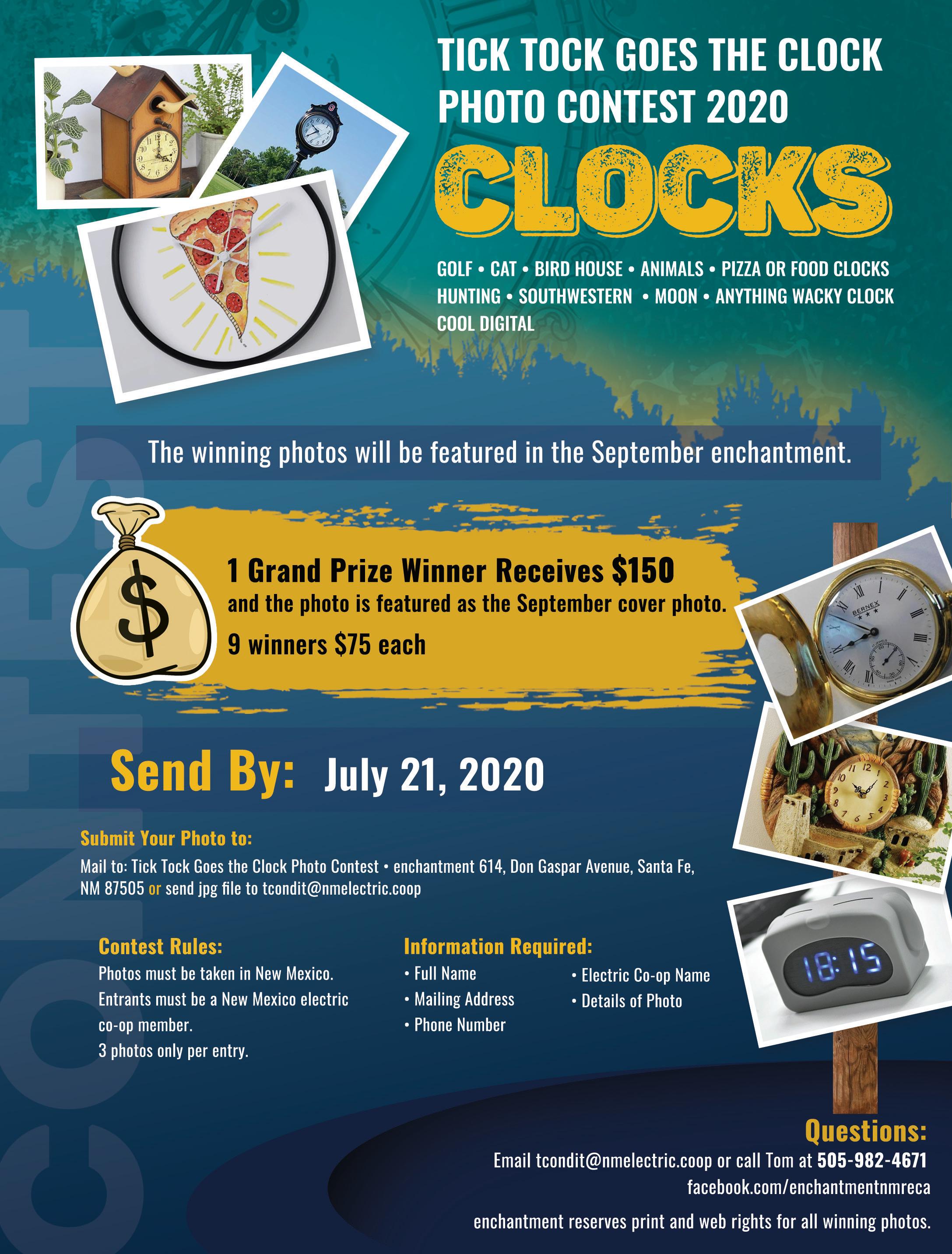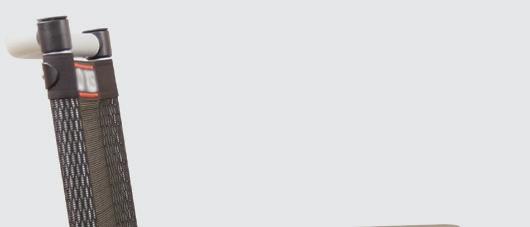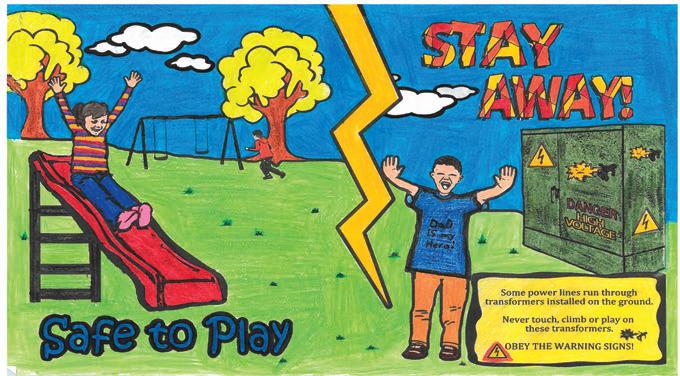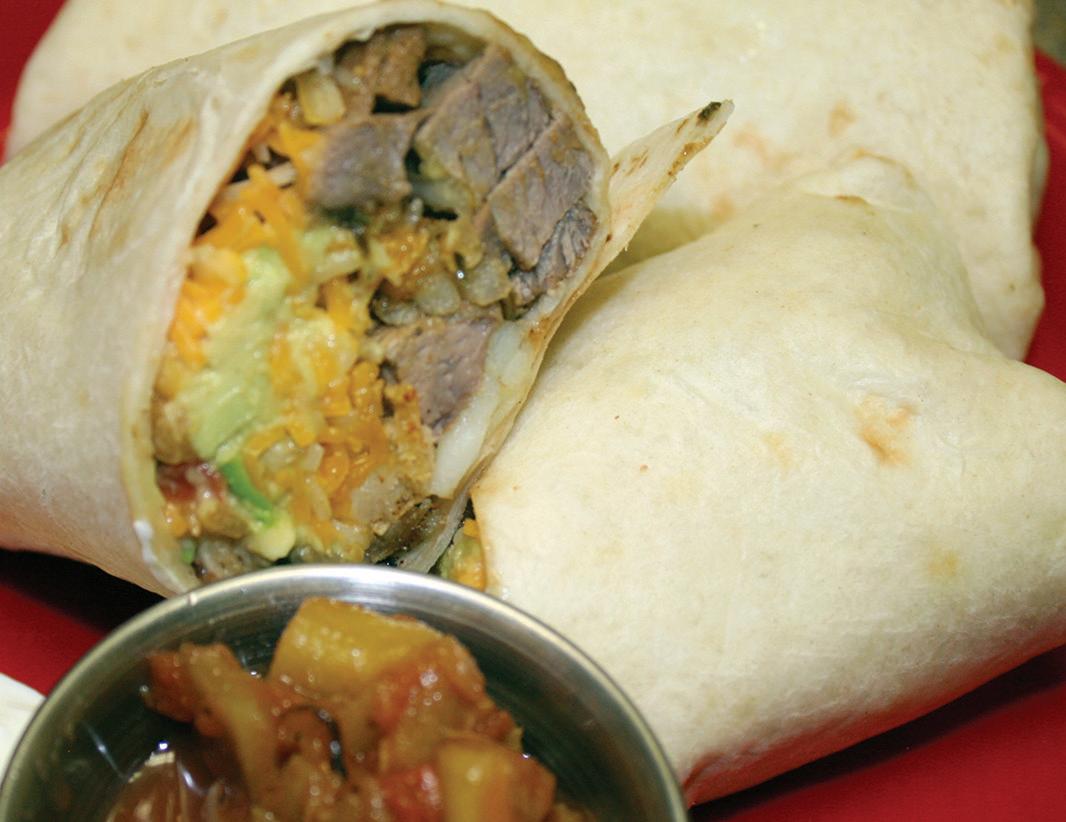
5 minute read
Heavy Metal Fan: Fred Moore
Heavy Metal Fan:

By Craig Springer
Fred Moore
If you were wondering where all the anvils went, you can find them on a secluded ranch some 15 miles in a southeasterly direction from Mountainair, in the care of Fred Moore. He’s been at it some 60 years and has amassed the largest collection of anvils in the world.
Getting to his place isn’t too complicated coming out of Mountainair. The first turn off the nation’s first transcontinental highway, U.S. 60, comes at the blinking light at the highelevation town nested on the south end of the Manzano Mountains in the heart of the Salt Missions—the three ancient Spanish mission edifices built of native stone by Native labor in the 1600s. Stone abounds here; history abounds here. It’s even expressed in the very route to the Moore’s ranch.
Each turn takes a hard right angle, 90-degrees, followed by long, straight stretches of road. The roads are at first the gray-black ribbon striped yellow that then transcends into gravel, rutted in the low places where water pools when the snow melts.
The roads, be they paved or dirt, are laid on section lines like most anywhere in the western two-thirds of the U.S. But these lines weren’t laid by land surveyors until around 1905, quite late in New Mexico’s storied past. Once surveyed, homesteaders soon followed. “Nesters,” they were called. And in the Estancia basin, a good many of them came from Oklahoma, Texas, and Arkansas. They populated the 2,400 square-mile basin from Stanley to just north of Capitan and set about bean farming.
Mountain bluebirds lit like electrified shards of the sky, flit off sun-grayed juniper fence posts as you approach Moore’s place. His ranch sits at about 6,500 feet above sea level—that point in New Mexico where the vegetation transcends from grasslands to juniper and piñon trees. Meadowlarks sing their flutey song. Moore’s 100-year-old brown stucco ranch house is nestled up against a bouldery mesa, brown in the color of a deer’s pelt, with ancient gnarled junipers whose roots palm into the stone behind the home. The abode is well-placed and offers a commanding view greater than 180 degrees up and down Hibler Valley, named for a former, longtime ranch owner and former Central New Mexico Electric Co-op employee, Noel Hibler.
A short jaunt from his porch sits a common metal building with uncommon contents—anvils of all sizes and shapes, ages, and wear. The first hint of what you are about to encounter is a sign on the corner of the barn that reads “Anvil Realty.”
A muscular Doberman pincer bounces alongside the car coming onto the property. His name is Pistol. Fred Moore, seventy-something years old, appears on the concrete apron of his anvil barn. He casts a long shadow. He is a large, imposing figure with a meaty handshake. You will soon see that he and his doberman have something in common: a striking exterior but a kind and gentle interior.

His T-shirt emblazoned with “Heavy Metal Fan” is the first indication that Moore has a sense of humor.
Fred Moore comes from the Nester stock, but his kin settled in Clovis on a farm growing wheat and milo and a few cows. That’s where he came of age. Moore became a welder and spent nearly three decades in the trade in the Clovis area. He was never a blacksmith, but in the welding and fabrication trade, he had the need to bend metal now and again. He acquired his first anvil at age 15, a gift, and he still uses it. It’s on the small side, slightly larger than a lunch box—it’s heavy but portable.
Moore gave up full-time welding and then started into a second career in real estate. Hence the Anvil Realty sign. Moore moved onto his Mountainair property nearly 40 years ago and started his Mountainair Trading Company.
One wonders at first sight of his collection if he works to support anvil habit. “They all come from all over the world,” says Moore, as he walks along the rows of hefty hulking hunks of metal. “Anvils come in all sizes and some surprising shapes.” His collection numbering around 2,800 pieces ranges in size from a few ounces to a half-ton. He owns an encyclopedic
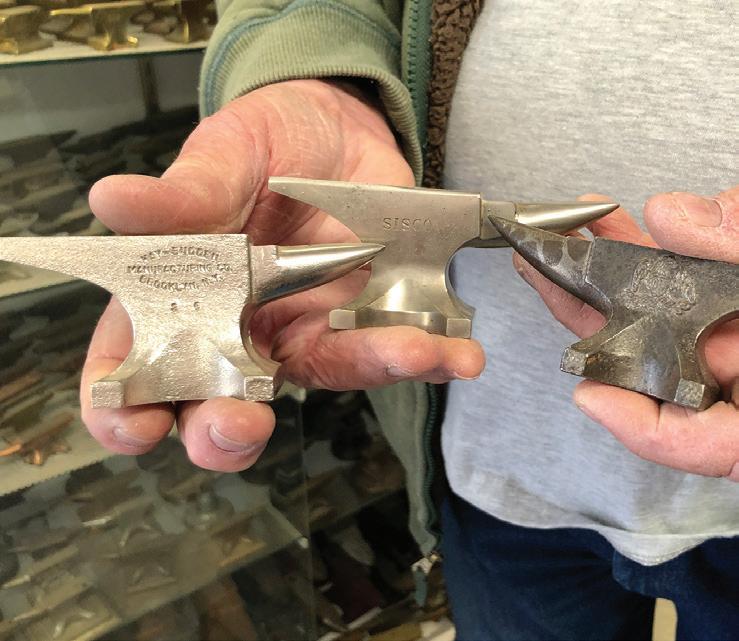
knowledge of the tool.
The barn floor sports several rows of anvils while old farm signs and a row of fence pliers numbering in the hundreds adorn the barn walls. Moore explains the basic parts of an anvil common to all the pieces no matter their intended specialized use: “You got the face, the table, and the horn,” says Moore. “On the oldest, well-used anvils that show a lot of wear on the face, you can tell if the blacksmith was left- or right-handed because one edge of the face will chip.”
Moore has the anvils ordered in the rows by manufacturer and by type and specialization. They were made in England, Ohio, and New Jersey. There are the Trenton brand, Arm and Hammer brand, several marked USA and at least one emblazoned with the Nazi swastika. French pig anvils were made in France 200 years ago and look like, well, you guess.
The age range in the collection is impressive, too. Though anvils have been eclipsed by modern manufacturing, a few are still being made today. The oldest anvil in Moore’s barn was built in the 1550s and was used to fabricate armor. He’s proud of his Don Baskins anvil, made in Tucumcari.
Perhaps the most unusual is the dental anvil. He owns three, all made

in Buffalo, New York. They were patented in 1916, about the time ranching operations were getting underway where he lives now. The dental anvil consists of a hollow conical tin tube with a heavy metal disk on top. “Dentists used it in traveling practices,” says Moore, as he cradled a top-heavy gray tube in his arms. “You could get your dentures made during home-visit,” he quips with a chuckle.
Aside from anvils, Moore has an impressive collection of related materials such as calendars, magazines, bottles, coins, mirrors, and salesman samples.
The old and new, the ancient and modern seem to coincide here at the Moore ranch. You find surprising things in surprising places. A mere 10 miles from the fabled Gran Quivera ruins sits the world’s largest collection of the anvils of all stripes, sizes and uses, at least one of which was crafting metal before the foundations were laid for any of the nearby Spanish missions.




